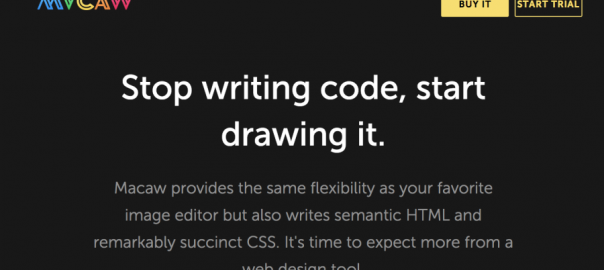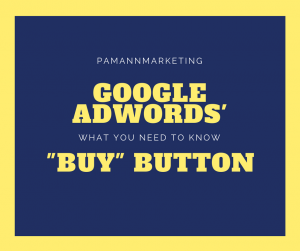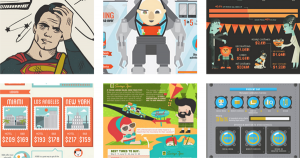
The secret to a successful SaaS marketing website isn’t really a secret. It’s a formula born out of common sense with a strong tilt toward your customers. What do they want? You should know this because it’s the essence of good product design. If you understand your customers and build your SaaS product or service to meet their needs, you’re a long way down the road to success. The same follows for your website.
Design your website for them, not for you, and you can increase the odds they stick around and become paying customers. Let’s take a look at the formula.
U + V + W = LTV
Where:
U = User Experience (or UX)
V = Valuable Content (for Your Customers)
W = Written Like a Human Being
LTV = Customer Lifetime Value (Growth in Monthly Recurring Revenues Over Time)
Now, let’s take a look at how to implement the formula.
U – Optimizing User Experience
Yes, I know, the purpose of your website is to increase free trial subscribers and convert them into paying customers. But that’s not their goal. Your visitor’s goal is to follow up on a hint she got from Google or Facebook or some other go-to resource she uses to find solutions to her deepest, darkest problems. Your SaaS product is one of many possible solutions. Your job is to make sure she finds answers to her questions without spending much time and effort.
Everything about your website should be designed with your visitor (user) in mind. Within a few short seconds, you need to let her know what you have to offer and why it’s relevant and valuable. Yes, you can test these messages and see which ones resonate with actual paying customers, but don’t turn your website into a laboratory and your visitors into mice. Do your homework before you launch. Interview likely customers prior to building your product, and leverage those ideas in building your website. There’s no need to get overly fancy about the user experience. Just state the user problem and how your stuff fixes it.
Here’s a great example from Macaw, which offers nothing short of a new way to visually design websites.

Macaw knows its most likely buyers—web designers without much coding experience. So they designed a tool that lets them create a cool website, and the rest (the code) follows automatically. Not just any code mind you; it’s lean, clean modern code that performs well.
Now that you have the message down, let’s make it even easier to become your customer. A few more UX best practices include:
- Clean, simple site architecture and navigation
- Responsive design with a consistent look and feel across all devices
- Material design—simple, “flat” look with minimum distractions
- Emphasis on typography rather than graphics—it’s all about message and value
- Emphasis on useful, helpful content rather than your company
V – Valuable Content
Beauty (or value) is in the eye of the beholder, right? So why not focus on content that interests your most likely buyers and keeps them engaged? Don’t know what topics and forms of content interest them? Why not ask them?
Birchbox does a great job of this by turning part of its site into a magazine, one part for Women and one for Men. Feature stories offer tips on beauty, health and wellness and general how-tos on being a better you. What’s not to like? And oh, by the way, they offer all of the cosmetics and grooming products you need to take advantage of all of the helpful content.

Ok, so for some businesses, it’s not so easy to crank out interesting, valuable content on a regular basis. Take Intacct, for example. It makes cloud-based financial management software targeting mid-market companies. What works for Intacct is leveraging brain power by talking directly with CFOs about their problems in a panel-format webinar.

The most important thing you can do with your content strategy is make sure it’s focused on your customers and helps them find solutions—not necessarily your solutions—and make it engaging enough to keep them coming back for more.
W – Write (Create) for Humans
You’re human, right? So are your customers. It doesn’t matter what industry you’re in, people won’t read boring technical articles unless they’re doing some serious research. Would you have a conversation with someone and turn it into a speech or a positioning statement? If you did, would they listen? Not bloody likely.
The art of content marketing is having conversations, real conversations with your visitors, subscribers, friends and peers. Every blog post and every social media update should be a conversation starter. Not necessarily something controversial or funny, but something real. What do people ask you most frequently? What are their pain points? What are yours? Start a conversation about that. Ask for people’s opinions and make sure you continue the conversation with your own experience and observations. This is how you engage people in 2015, and it works across any type of communication device—and in person!
Here’s a great example of both humanizing your content and making it valuable. John Bonini, our friend at Impact Branding and Design, has been running Website Throwdowns each month, in which he and one or more website design gurus from other agencies get together online and critique submitted websites from subscribers. It’s informal and fun, but mostly informative, since these guys really know their stuff.
LTV – Why This Formula Works
By designing your website for your customers using UX design best practices and refreshing your site regularly with helpful, informative content with a human flair, you create a reason for your visitors, leads and customers to return and engage in conversations with you. Conversation can impact several critical steps in the buyer journey including:
- A decision to register for a free trial
- Successful user experience during the free trial
- Decision to purchase a premium subscription
- Customer satisfaction, positive reviews and social media sharing
- Upgrades and renewals
- Brand loyalty and advocacy
All of that adds up to customer lifetime value and success for your SaaS company.
Photo credit: I Harsten
(256)
Report Post







